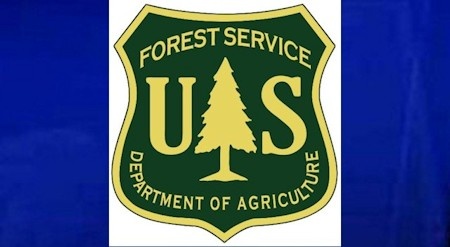Deschutes, other NW national forests expand area closures due to wildfires

SISTERS, Ore. (KTVZ) -- The Sisters Ranger District of the Deschutes National Forest on Friday expanded a forest closure to large portions of the Metolius area and the Mt. Jefferson Wilderness as a precaution against potential wildfire spread from the Lionshead Fire.
In addition, all sections of the Pacific Crest Trail on the Deschutes National Forest also are closed as of Friday.
Metolius Basin and Mt. Jefferson Wilderness Closures
On Friday and Saturday, westerly winds are expected in the area of the fire, which could move the Lionshead Fire east and south into the Metolius Basin and the Mt. Jefferson Wilderness on the Deschutes National Forest.
The new fire closure includes
- The entirety of the Mt. Jefferson Wilderness.
- All national forest lands north of Forest Service Road 1220, Forest Service Road 1217, and Forest Road 1120 to the boundary of Forest Service Road 11 on the east and the boundary with the Warm Springs Reservation on the north.
- Forest Service Road 11 is closed to all travel north of the junction with Forest Service Road 1102 (Indian Creek Road).
- Perry South, Monty, Candle Creek, Lower Bridge, Pioneer Ford, Allen Springs, Lower Canyon Creek, Gorge, Pine Rest, Smiling River, and Jack Creek Campgrounds.
- Jefferson Lake, Cabot Lake, Bear Valley, Head of Jack Creek, Jack Creek, and Upper Black Butte trailheads.
- The entirety of the Green Ridge area.
The southern portion of the Camp Sherman area up to Allingham Bridge remains open.
Pacific Crest Trail
All sections of the Pacific Crest Trail within the Deschutes National Forest are closed as of Friday.
The public is reminded be aware of all forest closures and follow them. Individuals can be fined for violating these closure orders. In addition, visitors to the Deschutes National Forest should note that no campfires are allowed anywhere on the Deschutes National Forest.
A map of the closures can be found at: https://www.fs.usda.gov/detail/deschutes/news-events/?cid=FSEPRD802623
National Forests Implement Temporary Closures Due to Active Wildfires
Portland, Ore. – Due to unprecedented fire activity and unsafe conditions, the USDA Forest Service has issued closure orders across Oregon and southern Washington. Full closure orders are in effect on the Mt. Hood, Siuslaw, and Willamette National Forests. Large area closure orders are in place on the Deschutes, Fremont-Winema, Gifford Pinchot, Rogue River-Siskiyou, and Umpqua National Forests, as well as the Columbia River Gorge National Scenic Area.
As of Friday morning, according to the Northwest Coordination Center, there are approximately 1.5 million acres affected by fire across Oregon and Washington. About 7,000 firefighters and fire support personnel are assigned to wildfire operations in the region.
These temporary closures are in place to support evacuation efforts, fire suppression, and access for fire crews. Orders restrict access to all but emergency personnel and persons with a permit authorizing their presence in the closure areas. Drivers are urged to use caution as many forest roads may be busy with firefighters, fire vehicles, and heavy equipment engaged in suppression and containment efforts.
“Firefighters and emergency responders are doing everything they can to protect communities and safely engage wildfires,” said Glenn Casamassa, Pacific Northwest Regional Forester. “We are facing unprecedented wildfire activity and our top priority is public safety. Please help us give our firefighters and emergency responders the space they need to do their job.”
Forests not under closure orders have implemented strict fire restrictions, including campfire bans, due to high and extreme fire danger levels. Wherever you are, whatever you’re doing, please use extreme caution with fire. One small spark can cause a large wildfire and add additional strain to firefighters and available resources.
Be sure to check with local units for the most current information on closures and fire restrictions. Click here to find links to individual national forests’ web pages for up-to-date notices.